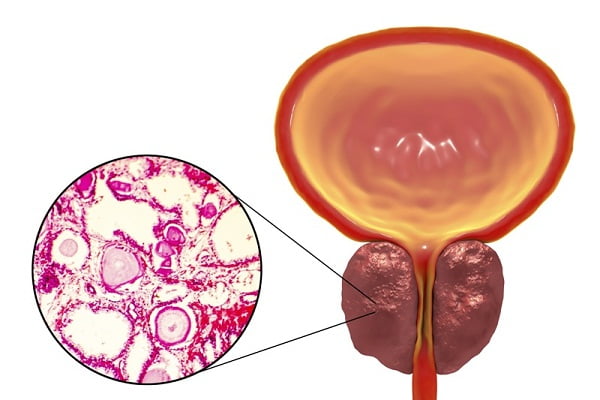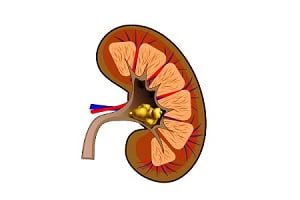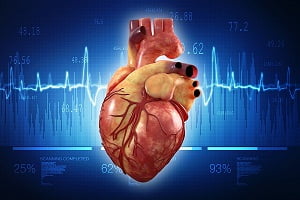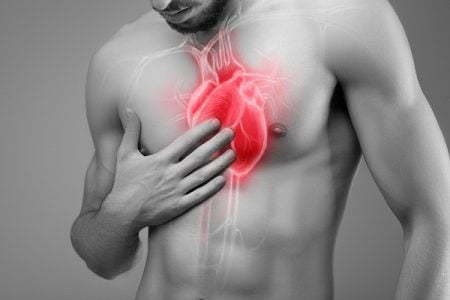
Diagnosis of enlarged prostate or benign prostate hyperplasis (BPH)
Detection and diagnosis of enlarged prostate at an early stage helps in better treatment and improving the lifestyle of a person without getting severe complications later and avoiding any further urinary diseases or infections.
Diagnosis of enlarged prostate is done by aone or more of these medical practitioners at successive levels to detect the problem and its severity:
General Physician. When you have signs and symptoms related to urinary functions which discomfort your life, you will go to a general physician who may ask questions about signs and symptoms. He or she may conduct physical examinations to detect your problem and also understand if it is arising due to an enlarged prostate or some other disease.
Urologist. Your general physician after physical examination may refer you to a urologist to examine symptoms further and ensure the symptoms are for enlarged prostate. The urologist will conduct tests to determine urine flow and frequency and the capacity to hold urine for long time.
Specialist. If your problems are detected prcisely and the tests also show positive results indicative of an enlarged prostate and/or related complications after examination by the urologist, the urologist may further refer you to a specialist who will examine your test results and recommend you any further tests if your condition is complex to detect severity of the disease and to provide suitable treatment to help treat your disease and symptoms. In most cases, the urologist is able to provide treatment of the enlarged prostate.
Read Also:Images of prostate enlargement
Read Also:Diet for enlarged prostate
How does a general physician (GP) examines signs and symptoms to diagnose enlarged prostate?
A Benign Prostate Hyperplasia (BPH) Symptoms score index is developed by The American Urological Association to rule out the signs and symptoms related to other urinary problems. The following questions are asked by your GP for BPH score index:
- How often you feel like you are not completely able to empty your bladder while urinating?
- How frequently you go to urinate before completion of 2 hours and after the first urination?
- How frequently it thappens that you can’t hold your urine?
- How often you push to urinate or start urinating?
- How often your urine stream is weak?
- How frequently you urinate in a day?
- How many times you wake up at night to urinate?
- When did your problem begin and how severe it is?
- Do you have any history of urinary tract infections?
- What is the amount of fluid consumption in a day?
- Are you an alcoholic or do you consume caffeinated drinks more frequently?
- What is your general medical history including major illnesses?
- What are the medications you are taking to cure symptoms of any illness you have?
The answers to this questionnaire and resultant score shows the severity of the disease. Thereafter, your GP will ask about your medical history to know whether these symptoms are due to some other reasons or related to prostate enlargement.
The general physician will then conduct initial physical tests and examinations to further evaluate prostate growth and confirm its severity. The following tests are done by your GP to check enlarged prostate.
Signs and Symptoms of Enlarged Prostate (Benign Prostatic Hyperplasia)
Tests for the diagnosis of enlarged prostate (prostate enlargement)
Digital Rectal Exam (DRE)
It is a physical examination procedure. In this test, a patient is asked to bend over a table or lie on one side holding his knees close to the chest. Now, the doctor or physician wears a lubricated glove. He then inserts his one lubricated gloved finger to your rectum to feel your prostate which lies near to it. This method is performed to examine enlarged prostate by your physician. The test determines any prostate deformity or abnormalities that require further examinations.
If any infection is suspected during an DRE exam, the physician rubs your prostate gland to obtain fluid for further examination with a microscope. This is the very first test that is done to diagnose enlarged prostate or any prostate abnormalities. In men, with an age of 50 and above, it is a part of routine check-up to detect any urinary problem.
Prostate-Specific Antigen (PSA) Blood Test
PSA blood test is one of the major tests to detect prostate problems. It is a blood test to measure prostate specific antigens which are present in a protein only made by the prostate gland. The test is included in routine physical examination list for men of age 50 and above and is also recommended to men of age 40 with a family history of enlarged prostate or prostate cancer. The test is also done to detect prostate cancer.
A man having problem in his prostate has increased levels of PSA in his blood. But the elevated levels of PSA do not always signify prostate cancer. It shows prostate abnormalities which may include infections as well. The PSA level rises due to an increased size of prostate. DRE in combination with a PSA test is used to rule out prostate cancer possibilities. Ejaculation can elevate prostate level for 24 to 48 hours, therefore it is mandatory for a patient not to ejaculate 2 days before a PSA test is done.
Little amount of PSA is present in blood of person with a healthy prostate. Low levels of PSA are better for prostate health. High level of PSA is an indicator of prostate abnormalities and prostate enlargement. PSA levels also rise due to inflammation of the prostate gland.
Blood Tests For Diagnosisng Enlarged Prostate
Blood tests are done to detect kidney problems. With blood test, levels of two chemical waste products – blood urea nitrogen and creatinine, are checked. Increased levels of these waste products show that kidneys are not functioning properly as they should. Blood tests are doen to rule out any possibility of kidney disorders.
Urine Test
A urine test is done to rule out any infection or other diseases which can cause simialr symptoms as that of enlarged prostate. Also, traces of any blood is checked in urine sample to rule out chances of bladder cancer and other conditions.
Read about blood urine (hematuria).
Neurological Exam
This is a brief examination of your mental functioning and nervous system. It helps in detecting any other cause of urinary problems that may be due to something other than the enlarged prostate.
Diagnosis to confirm benign prostatic hyperplasia (BPH) or enlarged prostate
After a physical examination and tests by general physician are done, you are referred to a urologist if any abnormality is detected by your GP to confirm enlarged prostate or any other conditions. A urologist will do urodynamic tests to determine and confirm that the symptoms are due to enlarged prostate and not due to any other condition. These tests are:
Urodynamic Tests
It includes a series of tests done to check how well your bladder, urethra and sphincter are holding and releasing the urine. Most of the urodynamic tests focus on bladder ability to hold and release urine properly. If urine blockage is causing the prostate problem, more tests are done to check urine flow rate and bladder pressure. A test to check urine stream is also done. Post-void residual test is done to measure amount of urine left after urination in the bladder.
Weak urine stream is a sign of urine blockage by enlarged prostate causing squeezing of the urethra. Some urodynamic tests are performed in the office of a healthcare provider without anaesthesia while others are performed in hospital with local anaesthesia.
The following tests are included as part of urodynamic evaluation:
Urinary flow test. This test is done to detect how long and strong your urine flow is. You are asked to urinate into a receptacle attached to a machine that measures speed, amount and strength of your urine flow. Full bladder is needed for this test. A doctor tells you how much amount of liquid to drink before the test. You do not have to pass urine two to three hours before the test is done. The test provides an idea about blockage or weakening of the bladder muscles if the urine flow is low and also about blockage in urethra due to enlarged prostate if the pressure applied to urinate by you is more than usual. The test results help to determine with time your condition is getting better or worst.
Post-void residual volume test. Whether you are able to empty your bladder completely or not is measured by this test. In this test, the amount of urine left after urination within the bladder is measured. You are asked to urinate before this test, then by an ultrasound scan or using a catheter, the amount of urine left after urination within the bladder is measured. Catheter is a thin tube placed in your urethra and threaded into your bladder to remove any urine left inside the bladder after urination. This left over urine obtained from the bladder is then measured.
Ultrasound test is done after the urine flow test to check how much amount of urine is left in the bladder. It can also help to check your kidneys and detect any abnormalities there.
24-hour voiding diary: If one third of urination is done at night, the recording of urine frequency and urine amount is helpful to detect the severity of symptoms.
After these tests are done, the urologist may know if there is an enlarged prostate. If the condition is complex, more tests are recommended to rule out any other major problem such as prostate cancer, kidney stone, bladder stone, and infections etc. The following tests are recommended in such cases:
Transrectal ultrasound. A transducer which is slightly larger than pen is inserted into the rectum of a patient next to his prostate. The ultrasound images help in determining the size of the prostate and of any infected and abnormal areas. This test cannot identify prostate cancer definitively.
Prostate Biopsy. After doing a transrectal ultrasound, if the doctor finds any possibilities of prostate cancer, prostate biopsy is done to confirm if you have prostate cancer. The sample for prostate biopsy is taken while doing Transrectal ultrasound. A transducer and an ultrasound image are used to guide a needle to the tumor and then a small piece of prostate tissue is removed with the help of this needle for microscopic examination.
Transrectal ultrasound with prostate biopsy is done in hospitals or healthcare provider offices under light sedation and local anesthesia. The tissue removed from prostate for biopsy is examined under microscope by pathologist who is specialized in disease diagnosis and to rule out prostate cancer.
Cystoscopy. In this test, a long thin tube called cytoscope is inserted into penis and pushed through urethra until it inters bladder. This thin tube helps doctors to visually examine the urethra and bladder and know about how vigorously the urethra is squeezed by the prostate. It also help in detecting the amount of urine left in the bladder after urination.
A cytoscope has a light at its end so that the doctor can see inside of your bladder. It has an eyepiece to see through and a camera at the end to see the bladder and urethra on a screen. The test is done under sedation using local anaesthesia. It is done when a patient has severe urinary problem and symptoms such as blood in urine, severe pain during urination and urinary infections are noticed.
Intravenous pyelogram or CT urogram. X-rays and CT scans of kidneys, bladder and ureters (tubes that connect kidney and bladder) are taken by inserting a tracer into the veins. This helps detect any stone in urinary tract, tumour and blockage of urinary tract or above the bladder.
Pad test. This test is done in case you have a problem of urine leakage. You are asked to wear an incontinence pad for certain period of time. Thereafter, the pad is weighed to measure the amount of leaked urine during that time period.
All the above mentioned tests and examinations are done to confirm or diagnose prostate enlargement and also to detect any other infections of urinary tract and related problems and complications such as bladder stone, kidney stone, prostate cancer etc. A thorough diagnosis helps in determining severity of the disease and to know suitable treatment options for a patient to treat the condition. The more you are aware about the signs and symptoms and the early the diagnosis is done, the lesser are the chances of disease progression and complications due to the disease.






